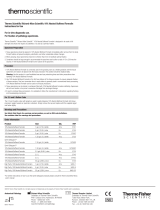
4 VENTANA PD-L1 (SP263) Assay in Urothelial Carcinoma Interpretation Guide
Introduction
Urothelial carcinoma (also known as urothelial cell carcinoma,
transitional cell carcinoma of the urinary tract, or urothelial
bladder cancer) is the most common cancer of the urinary system
worldwide. The majority of urothelial tumors arise in the bladder
with the remainder originating in the renal pelvis, urethra, or ureter.
Transitional cell carcinoma (TCC) is the most common histologic
subtype associated with bladder cancer and accounts for greater
than 90% of all urothelial carcinoma cases in the industrialized world;
non-urothelial subtypes (e.g., squamous cell, adenocarcinoma, small
cell carcinoma) are more frequent in other areas of the world.
1
Globally, there were an estimated 429,793 new cases of bladder
cancer and 165,084 deaths in 2012.
2
In Europe alone, for 2012, there
were an estimated 151,297 new cases of bladder cancer and 52,411
deaths. In 2015, it was estimated that there would be 74,000 new
cases of bladder cancer and 16,000 deaths in the United States.
3
Urothelial carcinoma presents as non-muscle-invasive, muscle-
invasive, or metastatic disease. The overall 5-year survival rate for
metastatic urothelial carcinoma (mUC) is approximately 5.4%.
4
PD-L1 is a transmembrane protein that downregulates immune
responses through binding to its two receptors programmed death-1
(PD-1) and B7-1 (CD80).
5
PD-1 is an inhibitory receptor expressed
on T cells following T-cell activation, which is sustained in states of
chronic stimulation such as in chronic infection or cancer.
6
Binding of
PD-L1 with PD-1 inhibits T cell proliferation, cytokine production, and
cytolytic activity, leading to the functional inactivation or exhaustion
of T cells. CD80 is a molecule expressed on antigen presenting cells
and activated T cells. PD-L1 binding to CD80 on T cells and antigen
presenting cells can mediate downregulation of immune responses,
including inhibition of T-cell activation and cytokine production.
7
PD-
L1 expression has been observed in immune cells and tumor cells.
8,9
Aberrant expression of PD-L1 on tumor cells and or tumor-associated
immune cells has been reported to impede anti-tumor immunity,
resulting in immune evasion.
6,9
Therefore, interruption of the PD-L1/
PD-1 pathway represents an attractive strategy to reinvigorate tumor-
specific T cell immunity suppressed by the expression of PD-L1 in
the tumor microenvironment. PD-L1 is expressed in a broad range of
cancers including lung, melanoma, urothelial, ovarian, and colorectal
cancer. Prevalence of PD-L1 expression has been reported from 12%
to 100% depending on the tumor type, anti PD-L1 clone and cutoff for
positivity.
10
Intended Use of Product
VENTANA PD-L1 (SP263) Assay is a qualitative immunohistochemical
assay using rabbit monoclonal anti-PD-L1 clone SP263 intended
for use in the assessment of the PD-L1 protein in formalin-fixed,
paraffin-embedded (FFPE) urothelial carcinoma tissue stained with
OptiView DAB IHC Detection Kit on a VENTANA BenchMark ULTRA
instrument.
PD-L1 status is determined by the percentage of tumor cells with
any membrane staining above background or by the percentage of
tumor-associated immune cells with staining (IC+) at any intensity
above background. The percent of tumor area occupied by any
tumor-associated immune cells (Immune Cells Present, ICP) is used
to determine IC+, which is the percent area of ICP exhibiting PD-L1
positive immune cell staining. PD-L1 status is considered High if any
of the following are met:
• ≥ 25% of tumor cells exhibit membrane staining; or,
• ICP > 1% and IC+ ≥ 25%; or,
• ICP = 1% and IC+ = 100%.
This product is intended for in vitro diagnostic (IVD) use.
Purpose of Interpretation Guide
This guide is intended to aid pathologists in the clinical evaluation
of formalin-fixed, paraffin-embedded (FFPE) urothelial carcinoma
sections stained with the Assay using the Assay Scoring Algorithms
in accordance with the proposed product labeling. Specifically, this
guide:
• Provides pathologists with a tool to facilitate the evaluation of
formalin-fixed, paraffin-embedded (FFPE) urothelial carcinoma
sections stained with the Assay using the Assay Scoring
Algorithms in accordance with the proposed product labeling.
• Provides photographic images that illustrate the staining patterns
and intensities that may result from staining of urothelial carcinoma
tissue samples with the Assay.
• Provides guidance in the use of placenta tissue as a system-level
control when stained with the Assay.
• Provides photographic images of internal controls.
• Provides a reference for relating staining patterns to specific PD-L1
scores.
• Provides example images of challenging cases to provide guidance
in their evaluation.


























